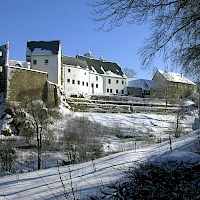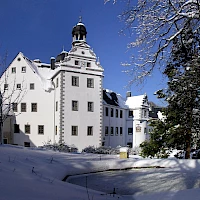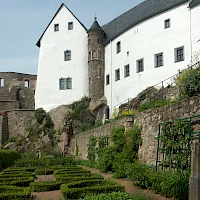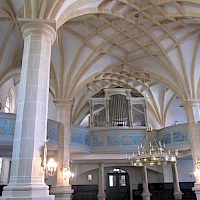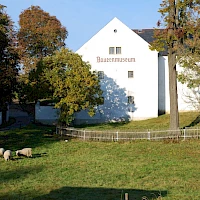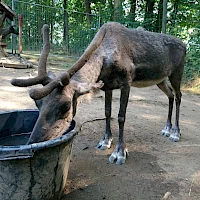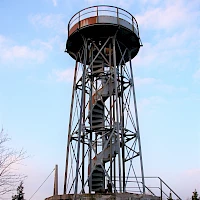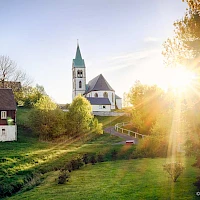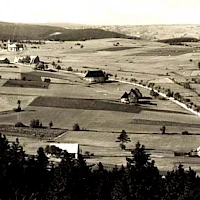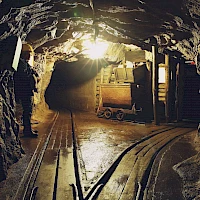Embark on an entertaining journey through 800 years of history of Lauenstein and Saxony. Admire the beautiful chambers of the Renaissance castle and discover exciting history and stories in the more than 30 exhibition rooms, enjoy the herb garden and a family-friendly exhibition. The various permanent exhibitions are supplemented by regularly changing special exhibitions.
Castle
The castle itself is worth a visit, for example with its magnificent coat of arms hall, the castle chapel and the richly painted bird hall.
Heribert Fischer-Geising
Heribert Fischer-Geising (1896-1984) was a painter and graphic artist who, in his numerous works, devotedly expressed his love for the landscape of the Eastern Erzgebirge. His affection was especially directed towards Geising and its surroundings. The approximately 50 exhibited works come from the fund of the Osterzgebirgsmuseum Schloss Lauenstein and the Heribert Fischer-Geising Foundation, which is affiliated to the museum. This is to remind us of the representative of the New Objectivity, who is far too little noticed today.
Müglitz Valley Railway
An exhibition is dedicated to the history of the railway Müglitztalbahn, on whose route Lauenstein is also located. The dioramas tell about its varied history. When the model of the narrow-gauge steam locomotive (a Saxon VI K) runs over the rails from Geising to Altenberg, not only children's hearts beat faster.
Hunting in the Eastern Erzgebirge
For the Lauenstein dominion, hunting always played an important role. Already in the Middle Ages, hunting became more and more a privilege of the nobility. The Counts of Bünau had the right of high and low hunting. Numerous trophies, animal preparations and hunting weapons can be seen in the permanent exhibition.
George Bähr
Hardly anyone knows that George Bähr, the famous master builder of the Dresden Frauenkirche, grew up in Lauenstein. The biography of George Bähr holds many secrets, and we also do not know his appearance, as no portrait of the master builder has been preserved. He was born in Fürstenwalde in 1666 and grew up in Lauenstein. In 1693 Bähr went to Dresden. There and in the surrounding area, he built various churches and some residential buildings. Bähr's main work is the world-famous Frauenkirche in Dresden.
Surveying the Saxon postal routes
The exhibition, unique in Saxony, tells the story of the important monuments of the postal and transport system of Saxony. In particular, you will learn interesting facts about the post mileage pillars, which August the Strong (1670-1733) had erected, but also about the surveying of Saxon roads. The magnificent distance columns, which can be found in many places in Saxony, still remind us of this elaborate project.
The forest in the eastern Erzgebirge
Visitors can find out how the forest became what it is today in various rooms of the permanent exhibition. They are taken into the former primeval forest of the Eastern Erzgebirge mountains, hear how the wolves howled and the brown bears hummed in the dense forests of the region. They also see and read how man has changed the nature of the Eastern Erzgebirge over the centuries.
In the dungeon
The history of law is closely connected with the Lauenstein dominion. Courts were held at the Lauenstein Castle until the middle of the 19th century. Today, numerous files from the 17th and 18th century allow us to have a look at the jurisdiction of this time. A dark dungeon from the Middle Ages on the grounds of the castle complex testifies to the dealing with former delinquents just as the detention cells and the guard room from the 19th century in the cellars in the east wing of the castle.
The herb garden
The terrace garden leans against the south side of the castle. Medicinal and aromatic herbs thrive in the beds. Enjoy the scent of the herbs and let yourself be surprised by the variety of plants and enchanted by the sight of the beautiful flowers.
Minerals from the Erzgebirge and all over the world
The exhibited minerals are a small part of the generous donation of Emmerich Pavlik to the Osterzgebirgsmuseum Schloss Lauenstein. The man from Frohburg was passionately searching for these treasures of the earth all his life. In doing so, he paid special attention to pieces that originated from the Erzgebirge.

